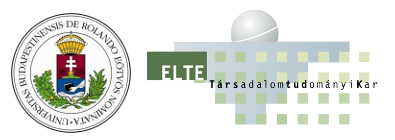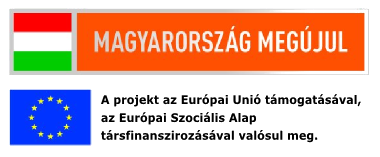[BCHLRM] Christiane Borchel – Ludger Humbert – Martin Reinertz: Design of an Informatics System to Bridge the Gap Between Using and Understanding in Informatics. Innovative Concepts for Teaching Informatics. Informatics in Secondary Schools: Evolution and Perspectives. Ueberreuter Verlag, Wien 2005, pp. 53—63.
[BP] Pavel Boytcev: Design and Implementation of a Logo-based Computer Graphics Course. Eurologo 2007, Bratislava
[BTPHSC] Torsten Brinda – Hermann Puhlmann – Carsten Schulte: Bridging ICT and CS – Educational Standards for Computer Science in Lower Secondary Education, ACM SIGCSE Bulletin - ITiCSE '09, Volume 41 Issue 3, September 2009, 288-292
[CsI] Csatlós István: Digitális képfeldolgozás tanítása a középiskolában. Neumann János Számítógép-tudományi Társaság, Budapest, 2008.
[DVSMEG]. Vassilios Dagdilelis, Maya Satratzemi, Georgios Evangelidis: Introducing Secondary Education Students to Algorithms and Programming. Education and Information Technologies 9:2, 159–173, 2004.
[EL] Lyv English: Data modelling in the beginning school years, Mathematics: traditions and [new] practices, aamt & merga, 226-234, 2011.
[HÉSzPZsL] Harangozó Éva, Szlávi Péter, Zsakó László: Joining Programming Theorems, a Practical Approach to Program Building. Annales Universitatis Scientiarum Budapestinensis. Sectio Computatorica. Budapest, 1996.
[HJ] Juraj Hromkovic: Algorithmic Adventures – From Knowledge to Magic. Springer, 2009.
[HJKJ] Jozef Hvorecky, Jozef Kelemen: Algoritmizácia, elementárny úvod. ALFA, Bratislava, 1983.
[HP] Peter Hubwieser: Functional Modelling in Secondary Schools Using Spreadsheets. Education and Information Technologies, June 2004, Volume 9, Issue 2, pp 175-183
[KI] Ivan Kala: Recognizing the potential of ICT in early childhood education. UNESCO Institute for Information Technologies in Education, 2010. (from page 34)
[KZKLIKZMGyFKFF] Zoltán Kátai, Lehel István Kovács, Zoltán Kása, Gyöngyvér Márton, Kinga Fogarasi, Ferenc Fogarasi: Cultivating algorithmic thinking: an important issue for both technical and HUMAN sciences. Teaching Mathematics and Computer Science, 9/1 (2011), 107-116
[SMPJJW] Mara Saeli, Jacob Perrenet, Wim M.G. Jochems: Teaching Programming in Secondary School: A Pedagogical Content Knowledge Perspective, Informatics in Education, 2011, Vol. 10, No. 1, 73–88, 2011 Vilnius University
[ML] Menyhárt László: Can a language be before the first programming language? Teaching Mathematics and Computer Science, 9/2, 209-224, 2011
[MLHÉ] Menyhárt László, Dr Pap Gáborné: Hogyan bírjuk gondolkodásra hallgatóinkat, miközben segítjük is munkájukat? Dokumentáció alapú programfejlesztés. INFODIDACT 2012 – 5. Informatika Szakmódszertani Konferencia, Zamárdi, Hungary, 2012. november 22-23., konferencia-CD
[NM] M. Nádasi Mária: A projektoktatás elmélete és gyakorlata (Géniusz könyvek 6.). Magyar Tehetségsegítő Szervezetek Szövetsége, 2010.
[PAPSzRLTE] Attila Pásztor, Róbert Pap-Szigeti, Erika Lakatos Török: Effects of Using Model Robots in the Education of Programming. Informatics in Education, 2010, Vol. 9, No. 1, 133–140, 2010 Institute of Mathematics and Informatics, Vilnius
[PMPB] Marian Petre, Blaine Price: Using Robotics to Motivate ‘Back Door’ Learning. Education and Information Technologies 9:2, 147–158, 2004.
[TTNA] Teodosi Teodosiev, Anatoli Nachev: Some Pitfalls in Introductory Programming Courses. Informatics in Education, 2012, Vol. 11, No. 2, 241–255, 2012 Vilnius University
[VV] Vass Vilmos (szerk.): NAT-hoz illeszkedő kulcsfogalom-rendszer, kulcskompetencia-térkép. Nemzeti Tankönyvkiadó tanulmány, 2011.
[VS] Siglinde Voß: Informatic models in vocational training for teaching standard software, 2005.
issep.uni-klu.ac.at/material/voss.pdf
  |
 |
 |
A tananyag az ELTESCORM keretrendszerrel készült